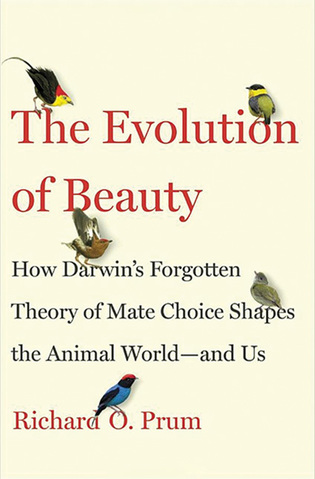 loading
loading
Arts & CultureReviews: September/October 2017Richard Prum on the evolution of beauty, a novel about two Yale alumnae by Sylvia Brownrigg, and James Ledbetter on America’s history with gold.  View full imageThe Evolution of Beauty: How Darwin’s Forgotten Theory of Mate Choice Shapes the Animal World—and Us Richard Conniff’s latest book, House of Lost Worlds (Yale), is now out in paperback. Since Darwin, biologists have believed that everything from the peacock’s fabulous tail to the mating dance of the club-winged manakin must be “adaptive”—that is, tending in some rational way to give the individual an advantage in the natural selection struggle. But in this entertaining and provocative book, Richard Prum reminds readers of Darwin’s other big idea: surviving natural selection by predators, disease, and so on isn’t enough to win the evolutionary sweepstakes. You must also attract a mate. Biologists preferred to ignore sexual selection for a century after Darwin proposed it. Their main problem: sexual selection in most species is largely about female choice. That cumbersome ornament? That bizarre display? Conventional Darwinians prefer to explain such things in rational, adaptive terms, as simply an honest signal that the bearer carries good genes, or will make a dutiful parent. But Prum quotes Darwin to the effect that the appearance and mating behaviors of males are largely a product of “the aesthetic capacity of females having been advanced through exercise or habit.” When it comes to mate choice, neither sex is particularly rational in its ideas about beauty. Sexual selection can become a runaway process, even working to the detriment of natural selection. Those club-winged manakins have evolved a bulky, solid ulna bone, which helps them produce a mating song that females find beautiful. But it’s also a case study in “sexual decadence,” having rendered both sexes inept on the wing. Prum handles all this with grace, humor, and an admirable aversion to scary biological jargon. His descriptions of bird displays are especially evocative. A white-fronted manakin’s call, for instance, “is a single whreeep note with the casual, rolling, froggy richness of a brief toot on a police whistle.” Prum’s arguments will sometimes annoy biologists who have taken a too single-mindedly adaptive approach to the natural world, as I have done as a writer. His explicit feminism will no doubt also discomfit some readers (particularly his explanation of how female choice left most male birds without a penis). Otherwise, I recommend this book highly to anyone interested in the natural world, beauty, or sex.
|
|